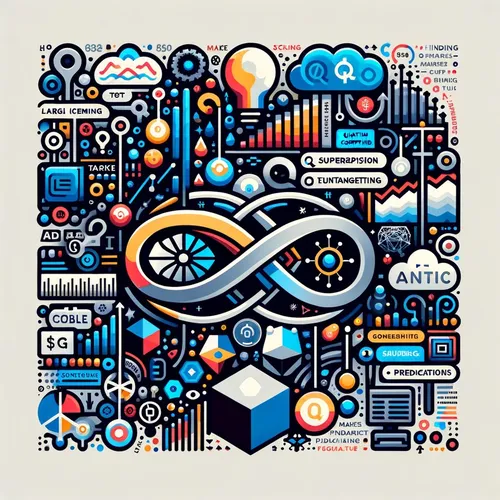IBM's Quantum Leap: Driving the Automotive Revolution with Qubits and Logistics
- Author
- Inception Point Ai
- Published
- Sat 14 Jun 2025
- Episode Link
- https://www.spreaker.com/episode/ibm-s-quantum-leap-driving-the-automotive-revolution-with-qubits-and-logistics--66558506
This is your Quantum Market Watch podcast.
Hello, quantum explorers, this is Leo—your Learning Enhanced Operator—welcoming you back to Quantum Market Watch. I know you’re here for the latest, and let me tell you, the quantum landscape is shifting faster than a qubit’s superposition.
Just this past week, IBM—yes, the very institution that’s been stitching together the fabric of quantum computing for decades—announced they are setting out to build the world’s first large-scale, fault-tolerant quantum computer at their new Quantum Data Center. It’s not just another roadmap; it’s a pivotal leap toward machines that are not just modular and scalable, but robust enough to handle the chaos of real-world computations. The IBM Quantum Loon, slated for this year, isn’t just a processor—it’s a proof-of-concept for linking qubits over great distances within a single chip, testing the architecture of qLDPC codes and pushing the boundaries of quantum connectivity. Kookaburra and Cockatoo, planned for the next two years, will start stitching these chips together, building a web of quantum modules as if each were a neuron in a vast, thinking network.
Now, let’s talk about today’s news: the automotive industry just announced a breakthrough use case for quantum computing. Imagine this—a major automaker is now leveraging quantum algorithms to optimize its supply chain logistics in real time, reducing bottlenecks and carbon footprints in one fell swoop. That’s right: quantum is moving off the lab bench and into the boardroom. This milestone is not just about faster or cheaper transport; it’s about reshaping an entire sector’s efficiency. Cars aren’t just cars—they’re data points, moving in a stochastic, uncertain world. Quantum computing gives us the power to see all possible routes, all possible delays, all possible outcomes—not as a statistical average, but as a quantum superposition of every path at once. That’s Schrödinger’s supply chain, and it’s real.
Picture this for a moment: the hum of a quantum processor, deep inside a data center, feels like the pulse of a star—cooled to near absolute zero, its qubits spinning in delicate balance, shielded from the world’s noise and heat. Opening the door to the control room, you’d be met with a low, metallic hum, the soft blue glow of superconducting circuits, and the electric anticipation of what happens next. Every qubit—every little quantum bit of information—is a tightrope walker, holding a whole world of possibilities in their superposed state. Add more qubits, link them with the new C-couplers that IBM is pioneering, and you’ve got more tightrope walkers, each step influencing the next, their entangled destinies shaping outcomes beyond classical logic. That’s the magic and the madness of quantum computing.
And let’s not forget the people. Names like Jay Gambetta and Jerry Chow at IBM are pushing this frontier, turning quantum theory into tangible technology. Their vision isn’t just about the machines; it’s about the ecosystem—talent, software, hardware, and the ever-present challenge of error correction. The quantum world is noisy, fragile, and prone to decoherence—yet these engineers and scientists are orchestrating the show, carefully coaxing qubits to cooperate, to remain entangled, to resist the lure of collapse.
But as we celebrate these breakthroughs, we face a paradox—one as fundamental as the uncertainty principle. The quantum industry is exploding, but it needs more than just qubits. As highlighted in the recent IQM State of Quantum report, the sector is grappling with a serious talent shortage and the need for robust software platforms. The market is projected to hit over $22 billion globally by 2032, but money and machines alone won’t solve the problem. We need minds, brilliant and curious, who can see both the quantum forest and the trees.
That’s where the true drama lies. Every day, I see quantum...
